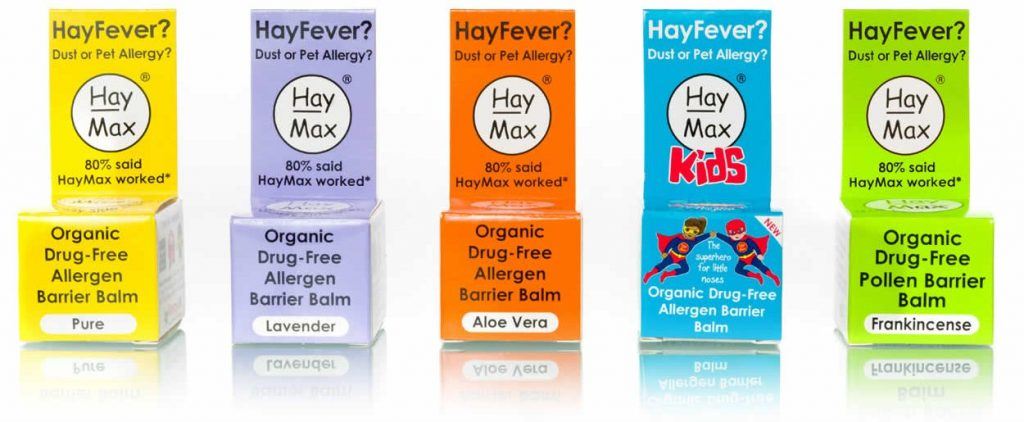Drug-Free & Non-Drowsy
Suitable for Adults and Kids
Suitable for Pregnant & Breastfeeding Women
Multi Award-Winning
80% Said It Works*
What is HayMax?
HayMax is a natural, organic allergen barrier balm (sometimes referred to as a nasal balm) that is applied to the rim of the nostrils. It can also be applied to the bones of the eyes. HayMax has been proven to reduce dust and pet allergens and more than a third of pollen from entering the body. Less allergen, less reaction.
This makes it safe for kids to use, for pregnant or breastfeeding women, and it isn’t likely to interact or interfere with other medications or medical issues you may have. It’s easy to use.
HayMax is so easy to use. Simply wipe a small amount on your finger (or cotton swab) and rub around the rim of each nostril and/or the bones of the eyes (not too close or in the eyes).
Apply first thing in the morning, keep a pot with you and re-apply whenever needed throughout the day. Apply before bed to trap pollen grains that are blown in through your window, or that might have landed on your pillow during the day. If you’re allergic to dust or pets, applying before bed will trap dust mite allergens and pet dander as you sleep.
NOTE: Give your nose a good blow and wash your face to remove pollen, dust, or pet allergens before you apply HayMax in the morning. A saline nasal rinse, spray, or neti pot can be helpful for clearing the nasal passages of allergens that have already entered the nose. HayMax will not be able to trap allergens once they are already in the nasal tract.
So my kids can use it safely, as part of our war on hay-fever and seasonal allergies campaign. It is gentle on skin, and you can either pick an unscented version or one with lavender, frankincense, or aloe vera in it.
I am not anti-medication, or medicines, but I do like to take a more natural approach to treat simple conditions like hay-fever and using HayMax might just be a way to make that a bit easier. It’s something the kids can apply themselves (no fuss, with mum trying to do it for them, although it can be used on babies and toddlers too who might need some help) and it doesn’t contain any ingredients that make it unsafe to be used by anyone, young or old.
The tween has used it a couple of times recently at school, for days when she does PE and is outside in the sports field dealing with grass and pollen and says it definitely helped her manage the mild symptoms she struggles with, and we have been using it on the small boy at nighttime.
I have taken to carrying a pot in my handbag, and it’s small enough and easy enough to use that you can pop one in a bag, or pocket, and it’s convenient for travel too.
Combined with some other basic tips to prevent hay-fever and allergies, we are really hoping it will help beat the pollen sniffles and sneezes a bit more this year.
